So, have you ever wondered about the story behind that rich and flavorful Mexican chocolate? You know, the kind that has a certain magical quality to it, like it transports you to another time and place with every sip? Well, get ready to embark on a journey through flavors as we delve into the enchanting history of Mexican chocolate.
When we think of chocolate, we often associate it with European countries like Switzerland or Belgium. But did you know that the origins of chocolate can actually be traced back to ancient Mesoamerica, modern-day Mexico? Yeah, it’s true! The ancient Mayans and Aztecs were among the first to discover and cultivate the cacao tree, and they believed that chocolate was a divine gift from the gods.
But it wasn’t just any regular chocolate they were indulging in. Oh no, Mexican chocolate had its own unique twist. The Mayans and Aztecs would grind roasted cacao beans into a paste, then mix it with water and spices like chili, vanilla, and even flowers. This concoction was often served as a frothy, bitter beverage that was highly valued for its supposed aphrodisiac and medicinal properties. Imagine, thousands of years ago, sipping on a cup of hot chocolate with a hint of chili. It’s like a whole different world of flavors, isn’t it?
So, that’s just a taste of the fascinating history of Mexican chocolate. If you want to learn more about the different flavors, traditional recipes, and how it has evolved over time, be sure to check out the rest of the article. Trust me, you won’t be disappointed. It’s like taking a trip through Mexico’s rich culinary heritage, one delicious sip at a time.
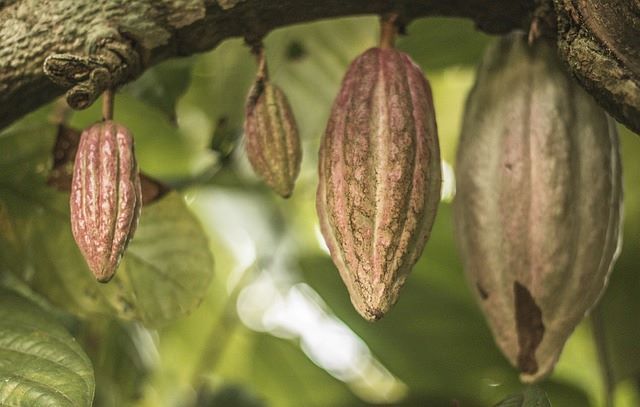
The Origins of Chocolate in Mesoamerica
The Ancient Roots of Chocolate
Imagine yourself in the ancient Mesoamerican civilization, where one of the most beloved and treasured delicacies in the world was first discovered – chocolate. The roots of chocolate can be traced back to as early as 1900 BC, where evidence of cacao consumption has been found in ancient Mayan and Aztec cultures. This humble cocoa bean, known as “cacahuatl” in the Nahuatl language, held immense significance in these cultures, not only as a delicious treat but also as a sacred substance with spiritual and cultural importance.
The Importance of Chocolate in Mesoamerican Culture
For the Mayans and Aztecs, chocolate was more than just a delightful indulgence. It was intertwined with their beliefs, rituals, and daily lives. Cacao was used as currency, given as offerings to deities, and used in religious ceremonies. It was believed to have divine powers and was often associated with fertility, vitality, and life itself. Chocolate was reserved for the elite, consumed by rulers, priests, and warriors, as a sign of their elevated status and refined taste.
The Traditional Methods of Making Chocolate in Mesoamerica
To truly appreciate the enchanting history of Mexican chocolate, it is important to understand the traditional methods of its production. The ancient Mesoamericans had intricate processes for preparing cacao beans to transform them into the rich, velvety chocolate we know today. The cacao beans were harvested, fermented, and dried. Then they were ground into a paste using a stone tool called a metate and mixed with water, spices, and sometimes even honey to create a frothy, aromatic drink. This traditional method is still preserved in some regions of Mexico, keeping the ancient art of chocolate-making alive.
The Arrival of Chocolate in Europe
The Spanish Conquest of Mexico and the Introduction of Chocolate
The enchanting journey of Mexican chocolate took a turn when European explorers, led by Christopher Columbus, stumbled upon the New World in the late 15th century. In 1519, Hernán Cortés, the Spanish conquistador, arrived in Mexico and encountered the Aztec empire, where he was introduced to the sacred drink made from cacao beans. Fascinated by its taste and cultural significance, Cortés brought cacao beans and the knowledge of its preparation back to Spain, marking the beginning of chocolate’s integration into European society.
The Adaptation of Chocolate in European Culture
As chocolate made its way into European culture, its preparation and consumption underwent significant transformations. The Spanish, in particular, embraced the addition of sugar, honey, and spices to the original recipe, creating a sweeter and more indulgent version of the Mesoamerican drink. It quickly became popular among the Spanish aristocracy and spread to other European countries, becoming a symbol of luxury and elegance.
The Rise of Chocolate Houses in Europe
In the 17th century, chocolate houses started to emerge across Europe, especially in England and France. These establishments became gathering places for the wealthy and the intellectual elite, who enjoyed drinking chocolate as a social activity. These chocolate houses were seen as centers of culture, conversation, and refinement, where poets, artists, and philosophers would meet to discuss ideas and savor the delights of chocolate. It was during this time that chocolate began to establish itself as a beloved beverage in European society.
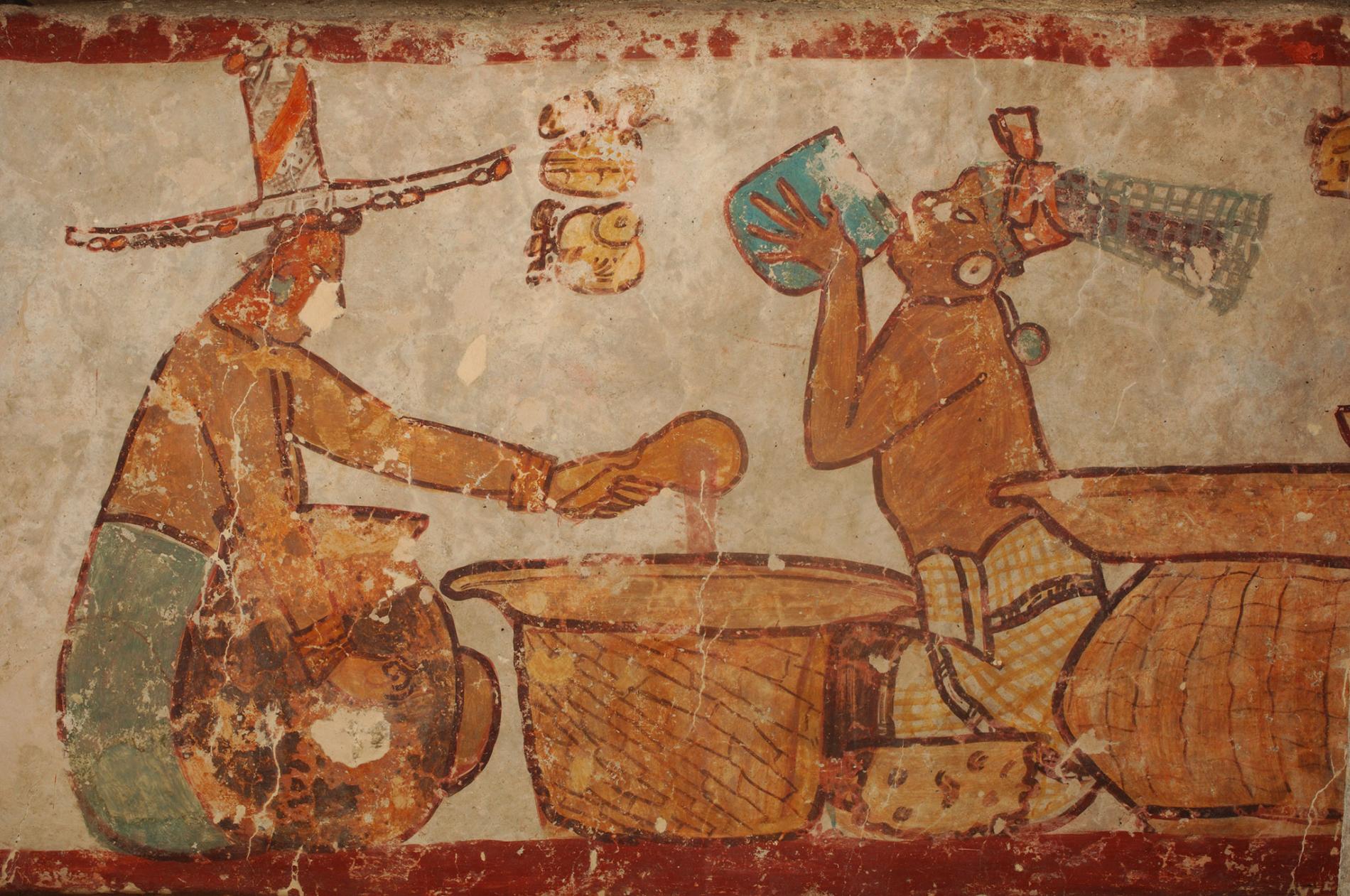
The Evolution of Mexican Chocolate
The Influence of European Techniques on Mexican Chocolate
While the European adaptation of chocolate brought new flavors and methods of consumption, it also left its mark on Mexican chocolate. The Aztec preparation method slowly evolved, incorporating European techniques and ingredients. The traditional Mexican chocolate as we know it today became a fusion of Mesoamerican heritage and European influence, resulting in a distinct flavor profile that sets it apart from other types of chocolate.
The Introduction of Sugar to Mexican Chocolate
One of the most significant contributions of the European influence on Mexican chocolate was the introduction of sugar. The sweetness of sugar perfectly complemented the bitter notes of cacao, creating a harmonious balance of flavors. Adding sugar to the traditional preparation of chocolate became a common practice, giving birth to the luscious, velvety Mexican chocolate we enjoy today.
The Symbolic Importance of Chocolate in Mexican Culture
In Mexican culture, chocolate remains deeply rooted, with its significance extending beyond culinary pleasures. It is a symbol of love, celebration, and spiritual connection. Chocolate is often associated with religious festivals, such as Dia de los Muertos (Day of the Dead), where it is offered as an altar decoration and consumed as a tribute to departed loved ones. Additionally, chocolate is a cherished ingredient in traditional Mexican weddings, where it is served to guests to celebrate the union of two individuals.
The Production Process of Traditional Mexican Chocolate
The Harvest of Cacao Beans
The enchanting journey of Mexican chocolate begins with the harvest of cacao beans. The cacao trees, primarily grown in the tropical regions of Mexico, produce large, colorful pods containing cacao beans. These pods are carefully picked by skilled farmers, ensuring they are ripe and ready for further processing.
The Fermentation and Drying of Cacao Beans
Once the cacao pods are harvested, the beans are carefully extracted and left to ferment in banana leaves or wooden containers. This fermentation process is crucial in developing the flavor complexities of chocolate, as it allows the sugars and acids in the beans to react and transform. After fermentation, the beans are spread out to dry under the sun, allowing the moisture content to decrease.
The Grinding and Conching of Cacao Beans
After fermentation and drying, the cacao beans are roasted and then ground into a paste using a traditional stone tool called a metate or a modern grinder. This grinding process transforms the beans into a smooth, viscous liquid known as chocolate liquor. The chocolate liquor is then subjected to “conching,” a process of continuously kneading and stirring the chocolate to refine its texture and enhance its flavor. This arduous process can take several hours, but it is essential in achieving the silky, luxurious texture that defines Mexican chocolate.
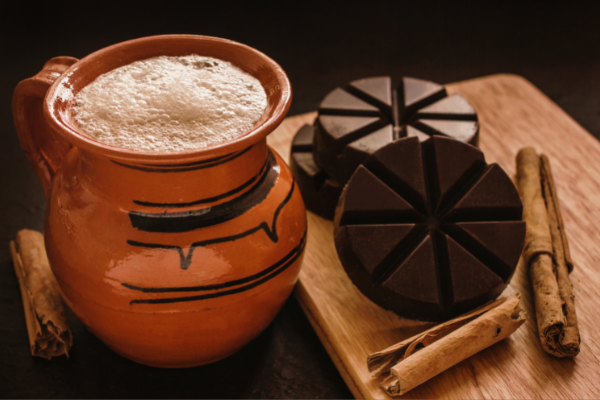
The Variety of Mexican Chocolate Products
Traditional Mexican Drinking Chocolate
One of the most iconic and beloved Mexican chocolate products is the traditional drinking chocolate. Prepared by combining finely ground Mexican chocolate with hot water or milk, this frothy beverage offers a rich and indulgent experience. The addition of spices such as cinnamon or chili adds a unique and delightful twist, creating a truly enchanting flavor profile.
Mexican Chocolate Bars and Tablets
The evolution of Mexican chocolate gave rise to the production of chocolate bars and tablets. These solid forms of chocolate are often made with the same traditional ingredients and techniques used for drinking chocolate but are shaped into convenient bars or tablets for easy consumption. Mexican chocolate bars are known for their rich, bold flavors and the unique texture resulting from the traditional grinding process.
Mexican Chocolate Desserts and Pastries
Mexican chocolate has also found its way into an array of delectable desserts and pastries. From mouthwatering chocolate cakes and flans to creamy chocolate-filled churros, the versatility of Mexican chocolate allows it to enhance the flavors of these traditional treats. Each bite is a journey into the enchanting world of Mexican chocolate, evoking a sense of delight and satisfaction.
Traditional Mexican Chocolate Drinks
The History of Mexican Hot Chocolate
One cannot embark on a journey through the flavors of Mexican chocolate without exploring the history of Mexican hot chocolate. This warm and comforting beverage has been enjoyed for centuries, providing a soothing and indulgent experience. The ancient Mesoamericans, with their rich cultural heritage, laid the foundation for the hot chocolate we know today. The addition of spices and the frothiness achieved through traditional pouring and mixing techniques create a unique sensory experience that has captivated people for generations.
The Popularization of Champurrado
Another traditional Mexican chocolate-based drink that has gained popularity in recent years is champurrado. This thick and rich beverage combines chocolate with masa harina (corn flour), giving it a unique texture and flavor. Champurrado is often enjoyed during festive occasions or as a morning beverage, providing a comforting and satisfying start to the day. It is best served alongside freshly baked sweet bread, creating a harmonious balance of flavors and textures.
The Unique Flavors of Mexican Chocolate-based Beverages
The versatility of Mexican chocolate allows for the creation of an array of flavorful beverages. From the refreshing cold drink known as “chocolate con hielo” to the decadent “chocolatada” made with evaporated or condensed milk, each sip offers a different combination of tastes and textures. The bold and complex flavors of Mexican chocolate, combined with the skillful craftsmanship of the chocolatiers, result in a diverse range of exhilarating beverages that cater to every palate.
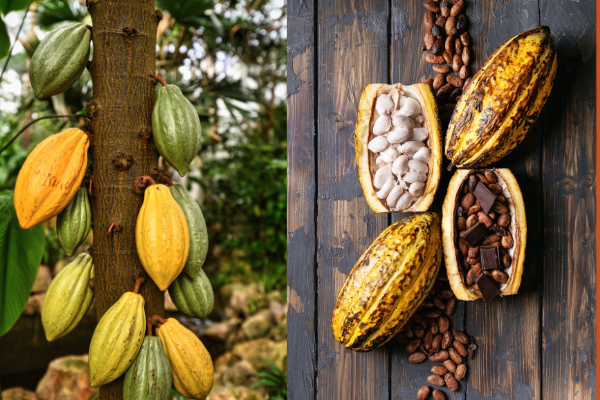
Mexican Chocolate in Culinary Exploration
The Use of Mexican Chocolate in Mole Sauces
Mole, the iconic Mexican sauce, showcases the magical union of chocolate and an array of spices, herbs, and ingredients. The exact origins of mole are debated, but its importance in Mexican cuisine cannot be overstated. Each region of Mexico has its own variation of mole, with subtle differences in flavors and ingredients, making it a reflection of the diverse culinary traditions across the country. The addition of chocolate to mole adds depth, richness, and a subtle hint of bitterness, elevating the dish to new heights of gastronomic delight.
The Pairing of Mexican Chocolate with Meats
In Mexican cuisine, the exploration of flavors does not stop at desserts and sauces. The enchanting history of Mexican chocolate reveals its unique ability to enhance the flavors of savory dishes, particularly meats. Chocolate adds a complex layer of depth and earthiness to meat-based dishes such as mole-stewed chicken, beef in adobo sauce, or pork with chocolate and spices. The marriage of chocolate and meat creates a symphony of flavors that is both surprising and unforgettable.
The Incorporation of Mexican Chocolate in Global Cuisine
The allure of Mexican chocolate extends beyond the borders of Mexico itself. Chefs and culinary enthusiasts around the world have embraced the flavors of Mexican chocolate and incorporated them into their own creations. From chocolate-infused desserts in high-end restaurants to chocolate-spiced cocktails in trendy bars, Mexican chocolate has become a sought-after ingredient, enticing food lovers with its distinctive taste and rich cultural heritage.
The Cultural Significance of Mexican Chocolate
Chocolate as a Gift in Mexican Culture
In Mexican culture, chocolate holds a special place as a cherished gift. The act of gifting chocolate is a gesture of warmth, love, and appreciation. Whether it is presented on special occasions like birthdays, anniversaries, or holidays, or simply as a token of friendship, the act of giving chocolate signifies a genuine connection and a desire to bring joy to the recipient.
Chocolate as a Symbol of Love and Celebration
Love and chocolate often go hand in hand, and this is especially true in Mexican culture. Chocolate is often associated with love and romance, making it a popular gift on Valentine’s Day and other romantic occasions. Additionally, chocolate plays a significant role in Mexican weddings, where it is served during the reception as a symbol of the sweet beginning of a couple’s life together.
Chocolate in Traditional Mexican Festivities
Mexican festivals and celebrations are filled with vibrant colors, lively music, and, of course, the enchanting flavors of Mexican chocolate. During Dia de los Muertos, altars are adorned with offerings of chocolate, symbolizing the joy and celebration of the lives of departed loved ones. In traditional Christmas festivities, Mexican hot chocolate is enjoyed alongside traditional sweet bread, creating a warm and joyful atmosphere.
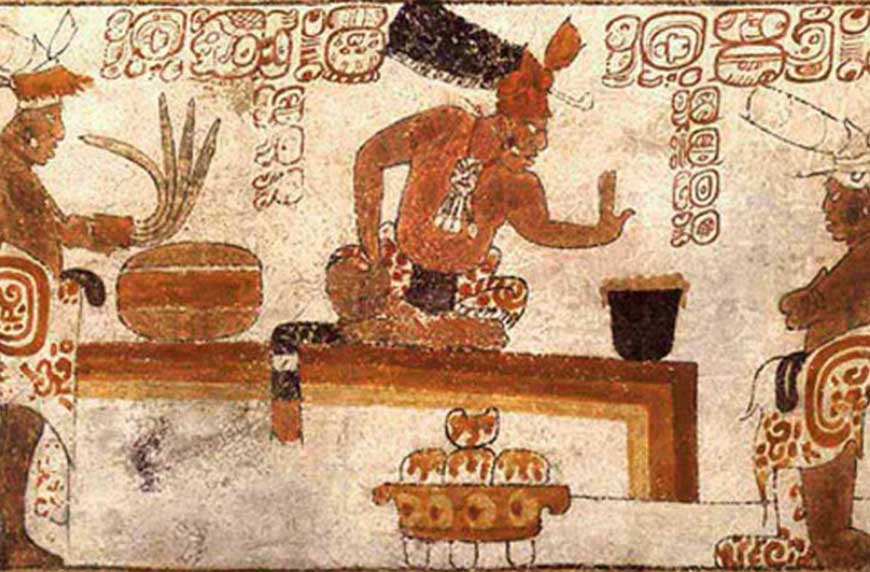
Modern Innovations in Mexican Chocolate
Mexican Chocolate Fusion with Other Cuisines
As Mexican cuisine continues to evolve and spread its influence around the world, chefs and chocolatiers have embraced the concept of fusion, creating tantalizing combinations of Mexican chocolate with other culinary traditions. From Mexican chocolate desserts with Asian influences to Mexican chocolate-infused cocktails with a modern twist, these innovative creations push the boundaries of flavor and surprise the palate with unexpected delights.
The Incorporation of Mexican Chocolate in Gourmet Desserts
The enchanting history of Mexican chocolate has found a home in the hands of talented pastry chefs who celebrate its rich flavors through the creation of gourmet desserts. With their expert craftsmanship and passion, these culinary artists transform Mexican chocolate into intricate, visually stunning creations that not only tantalize the taste buds but also ignite the imagination. From chocolate ganache tarts to decadent chocolate truffles, these gourmet desserts showcase the versatility and timeless appeal of Mexican chocolate in the world of culinary indulgence.
The Contemporary Chocolate Art Movement in Mexico
Beyond the realm of culinary pleasure, Mexican chocolate has also inspired a contemporary art movement in Mexico. Artists explore the tactile and sensory experiences associated with chocolate, using it as a medium for their artistic expressions. Sculptures, installations, and multimedia works bring the enchanting world of Mexican chocolate to life, blurring the boundaries between art and gastronomy and immersing the audience in a truly unique sensory experience.
The Health Benefits of Mexican Chocolate
The Nutritional Value of Cacao
While indulging in the enchanting flavors of Mexican chocolate, it is worth noting the potential health benefits of cacao, the main ingredient in chocolate. Cacao beans are rich in antioxidants, fiber, and essential minerals such as magnesium and iron. These nutritional components contribute to overall well-being and can have positive effects on heart health, mood, and cognitive function.
The Antioxidant Properties of Mexican Chocolate
The high concentration of antioxidants found in cacao has been linked to various health benefits, including the reduction of inflammation and oxidative stress in the body. Antioxidants help fight free radicals, which can cause cellular damage and contribute to the development of chronic diseases. Indulging in a piece of Mexican chocolate, rich in cacao, can be a delicious and guilt-free way to boost your antioxidant intake.
The Mood-Enhancing Effects of Chocolate
Chocolate has long been associated with feelings of happiness and well-being, and research suggests that the consumption of chocolate can have mood-enhancing effects. The presence of certain compounds in chocolate, such as phenethylamine and serotonin, can trigger the release of endorphins, also known as “feel-good” chemicals, in the brain. So, go ahead and savor that piece of Mexican chocolate, knowing that it can potentially uplift your spirits and bring a smile to your face.
Sustainable Practices in Mexican Chocolate
The Importance of Fair Trade and Ethical Sourcing
As the enchanting history of Mexican chocolate continues to captivate the globe, it is imperative to ensure that the process of chocolate production remains sustainable and ethical. Fair trade practices, which ensure that farmers are paid a fair price for their cacao, play a crucial role in preserving the livelihoods of cacao farmers and their communities. Ethical sourcing of cacao beans ensures that the environment is protected, promoting biodiversity and ensuring the sustainability of cacao farms for future generations.
The Preservation of Traditional Chocolate Making Techniques
The preservation of traditional chocolate making techniques is not only important for honoring the rich cultural heritage of Mexican chocolate but also for ensuring the quality and authenticity of the product. By preserving these time-honored methods, we can continue to savor the flavors of traditional Mexican chocolate and support the communities that have dedicated themselves to its production for centuries.
The Protection of Cacao Farms and Biodiversity
Cacao trees thrive in diverse ecosystems, making the preservation of cacao farms essential for the protection of biodiversity. Cacao farming, if done sustainably, can contribute to the preservation of the rainforest and the maintenance of ecological balance. By supporting cacao farmers who practice responsible and sustainable cultivation methods, we can play a part in protecting the fragile ecosystems that are home to cacao trees and other unique species.
Exploring the Mexican Chocolate Landscape
The Chocolate Museums of Mexico
For those who wish to delve deeper into the enchanting history of Mexican chocolate, a visit to one of Mexico’s chocolate museums is a must. These museums offer a journey through time, exploring the origins, production processes, and cultural significance of Mexican chocolate. With interactive exhibits, workshops, and tastings, visitors can immerse themselves in the magic of chocolate and gain a deeper appreciation for this captivating delicacy.
The Unique Chocolate Tastings and Tours in Mexico
To truly experience the enchanting flavors of Mexican chocolate, indulge in a chocolate tasting or embark on a chocolate tour in Mexico. In cities such as Oaxaca, Chiapas, and Mexico City, you can find specialized chocolate shops and restaurants that offer guided tastings, allowing you to explore the nuances of different chocolate varieties. These tours provide an opportunity to learn about the history and traditions of chocolate-making directly from the experts and to savor the diverse flavors that Mexican chocolate has to offer.
The Celebrated Chocolate Festivals of Mexico
Mexico is home to a plethora of vibrant and captivating chocolate festivals that celebrate the rich history and flavors of Mexican chocolate. These festivals bring together chocolate enthusiasts, chocolatiers, and cacao farmers from all over the world to showcase their products, exchange knowledge, and participate in cultural events. From the Festival Internacional del Chocolate in Tabasco to the Festival del Chocolate y Pan de Muerto in Mexico City, these festive gatherings are a testament to the enduring appeal and cultural significance of Mexican chocolate.
Mexican Chocolate in Popular Culture
Mexican Chocolate in Films and Literature
The enchanting history of Mexican chocolate has also found its way into popular culture through films and literature. From sensuous chocolate scenes in movies to whimsical stories that revolve around the magic of chocolate, these artistic representations capture the essence of Mexican chocolate and its power to evoke desire, pleasure, and nostalgia.
The Iconic Chocolate Abuelita Brand
No journey through the flavors of Mexican chocolate would be complete without mentioning the iconic brand, Chocolate Abuelita. This beloved Mexican chocolate brand has been a staple in Mexican households for generations. Known for its distinctive hexagonal packaging and rich, satisfying flavor, Chocolate Abuelita is a symbol of comfort, tradition, and family connections. Whether enjoyed as a warm cup of hot chocolate or as a key ingredient in recipes, Chocolate Abuelita continues to be a cherished part of Mexican culture.
Mexican Chocolate in Art and Design
The enchanting flavors and cultural significance of Mexican chocolate have also inspired artists and designers, who incorporate its motifs and symbolism into their creations. From chocolate-themed paintings to intricate ceramic pieces, Mexican chocolate serves as a muse for artists seeking to capture its magic and allure. These artistic expressions pay homage to the rich history and cultural heritage of Mexican chocolate, bringing it to life through diverse forms of art.
Conclusion
Embarking on a journey through the flavors of Mexican chocolate is an enchanting and captivating experience. From its ancient roots in Mesoamerica to its integration into European culture, Mexican chocolate has evolved and enraptured the taste buds of people around the world. The traditional methods of making Mexican chocolate, the unique flavors of Mexican chocolate-based beverages, and the inventive use of Mexican chocolate in culinary exploration all contribute to its enduring appeal.
The cultural significance of Mexican chocolate adds an extra layer of enchantment. From its role in celebrations and festivities to its symbolism of love and friendship, Mexican chocolate connects people and fosters a sense of community. The modern innovations in Mexican chocolate, the health benefits it offers, and the focus on sustainability ensure that the enchanting journey of Mexican chocolate continues to unfold and inspire.
So, let your taste buds embark on a journey through the flavors of Mexican chocolate, immersing yourself in the rich cultural heritage, vibrant traditions, and delightful indulgence that it offers. Embrace the enchanting story of Mexican chocolate, let its flavors transport you, and savor every moment of this truly enchanting experience.